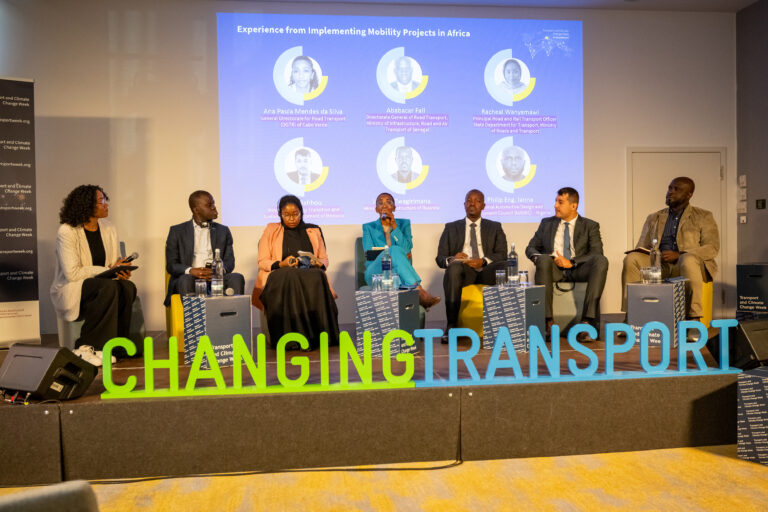China vows to boost domestic consumption, tech self-reliance in next five years as Fourth Plenum wraps – CNBC

Report on China’s Five-Year Development Plan and Alignment with Sustainable Development Goals
A recent plenary meeting of China’s top leadership outlined the nation’s five-year development targets, emphasizing domestic economic rebalancing, technological self-reliance, and sustainable growth. The plan demonstrates a strategic alignment with several key United Nations Sustainable Development Goals (SDGs), particularly those concerning economic growth, innovation, and responsible consumption.
Economic Strategy for Sustainable Growth and Consumption
The leadership has pledged to significantly boost domestic consumption, a strategic pivot aimed at fostering more resilient and sustainable economic models in line with SDG 8 (Decent Work and Economic Growth) and SDG 12 (Responsible Consumption and Production).
- Expanding Domestic Demand: The plan identifies expanding domestic demand as a strategic priority, calling for a balance between consumption and “effective investment.” This approach seeks to create a virtuous cycle where new supply is driven by new demand.
- Policy and Implementation: The government plans to implement policies supporting businesses and launch “special actions” to stimulate consumer spending. Investment is expected to be directed towards consumption-related sectors such as urban planning, public services, and elderly care, contributing to SDG 11 (Sustainable Cities and Communities).
- Economic Outlook: Analysts note that while the focus on consumption is clear, the absence of commitments to direct fiscal stimulus or income-boosting measures raises questions about the plan’s potential impact on SDG 10 (Reduced Inequalities). The reaffirmed annual growth target of approximately 4.6% through 2035 will require significant resource allocation.
Technological Advancement and Sustainable Industrialization
A central pillar of the new plan is achieving technological self-reliance, which directly supports SDG 9 (Industry, Innovation, and Infrastructure) by promoting sustainable industrialization and fostering innovation.
- Self-Reliance in Key Technologies: China aims to achieve a “significant leap forward” in scientific and technological strength by 2035. The plan prioritizes advancements in emerging fields such as quantum computing and hydrogen power.
- Clean Energy and Climate Action: The focus on hydrogen power aligns with SDG 7 (Affordable and Clean Energy) and complements China’s existing commitments to carbon emission reduction targets under SDG 13 (Climate Action).
- Strengthening Manufacturing: The plan calls for accelerating the development of a “strong manufacturing nation” while maintaining a reasonable proportion of manufacturing in the economy, reinforcing the national strategy for industrial resilience and innovation under SDG 9.
Commitments to Broader Sustainable Development Goals
The development plan extends beyond economic and technological targets to address other critical areas of sustainable development.
- Food Security: The goal to develop a “strong agricultural nation” directly addresses SDG 2 (Zero Hunger) by aiming to enhance food security and promote sustainable agriculture.
- Sustainable Urban Development: The call for “high-quality development” of the real estate sector points towards efforts to create more sustainable and resilient urban environments, in line with SDG 11 (Sustainable Cities and Communities).
- Global Partnerships: Despite a primary focus on domestic development, the plan acknowledges the importance of safeguarding the multilateral trading system, reflecting a commitment to SDG 17 (Partnerships for the Goals).
- New Economic Metrics: The decision to track Gross National Income (GNI) alongside Gross Domestic Product (GDP) indicates a potentially broader approach to measuring economic well-being and progress towards SDG 8.
Analysis of Sustainable Development Goals in the Article
1. Which SDGs are addressed or connected to the issues highlighted in the article?
- SDG 2: Zero Hunger – The article mentions China’s goal to develop its agricultural sector.
- SDG 8: Decent Work and Economic Growth – The article extensively discusses China’s economic growth targets, plans to boost consumption, and investment strategies.
- SDG 9: Industry, Innovation and Infrastructure – A major focus of the article is on China’s push for self-reliance in technology, strengthening its manufacturing base, and investing in advanced industries.
- SDG 11: Sustainable Cities and Communities – The article includes analysis suggesting that future investment may target urban development and public services.
- SDG 12: Responsible Consumption and Production – The central theme of the article is China’s new five-year plan to “vigorously boost consumption” and manage the relationship between supply and demand.
- SDG 13: Climate Action – The article makes a direct reference to China’s commitment to its plans for reducing carbon emissions.
2. What specific targets under those SDGs can be identified based on the article’s content?
SDG 2: Zero Hunger
- Target 2.4: By 2030, ensure sustainable food production systems and implement resilient agricultural practices that increase productivity and production. The article states that China’s plan calls for “developing a ‘strong agricultural nation’,” which aligns with the goal of strengthening food production systems and agricultural productivity.
SDG 8: Decent Work and Economic Growth
- Target 8.1: Sustain per capita economic growth in accordance with national circumstances. The article directly supports this by mentioning China’s specific economic goals: “The readout reaffirmed the 2025 growth target of around 5% and other previously shared goals… All that implies annual growth of 4.6% through 2035.”
SDG 9: Industry, Innovation and Infrastructure
- Target 9.2: Promote inclusive and sustainable industrialization and, by 2030, significantly raise industry’s share of employment and gross domestic product. The article highlights China’s focus on manufacturing, stating the plan aims for “accelerating the establishment of a strong manufacturing nation,” while also “noting the need to maintain a ‘reasonable’ proportion of manufacturing in the country.”
- Target 9.5: Enhance scientific research, upgrade the technological capabilities of industrial sectors in all countries… including… encouraging innovation. This is a core theme of the article, which states that leaders “pledged to… strengthen self-reliance in advanced technologies such as quantum computing and hydrogen power” and “called for improving tech self-reliance.”
SDG 11: Sustainable Cities and Communities
- Target 11.3: By 2030, enhance inclusive and sustainable urbanization and capacity for… sustainable human settlement planning and management. An analyst quoted in the article suggests that China’s investment strategy will likely focus on consumption-related sectors, including “improved urban planning, public services, and elderly care,” which are key components of sustainable urban development.
SDG 12: Responsible Consumption and Production
- Target 12.1: Implement the 10-Year Framework of Programmes on Sustainable Consumption and Production Patterns. The article’s central topic is China’s national strategy to alter its economic balance by focusing on consumption. The readout states China must “vigorously boost consumption” and “adhere to the strategic point of expanding domestic demand,” representing a national policy shift towards new consumption patterns.
SDG 13: Climate Action
- Target 13.2: Integrate climate change measures into national policies, strategies and planning. The article explicitly mentions that as part of its five-year planning, “Beijing also noted it will work towards previously released plans to reduce carbon emissions,” directly integrating climate goals into its national development strategy.
3. Are there any indicators mentioned or implied in the article that can be used to measure progress towards the identified targets?
Indicators for SDG 8 (Target 8.1)
- Indicator 8.1.1: Annual growth rate of real GDP per capita. The article explicitly mentions several metrics that are used to measure this indicator. It states that Beijing would track “gross national income” (GNI) and “gross domestic product” (GDP). It also provides specific target figures, such as the “2025 growth target of around 5%” and an implied “annual growth of 4.6% through 2035.”
Indicators for SDG 9 (Target 9.2)
- Indicator 9.2.1: Manufacturing value added as a proportion of GDP and per capita. The article implies this indicator by mentioning the need to “maintain a ‘reasonable’ proportion of manufacturing in the country,” suggesting that this proportion is a key metric being monitored.
Indicators for SDG 12 (Target 12.1)
- Implied Indicator: Share of consumption in GDP. The article highlights this as a key metric for measuring the success of the new policy. An official stated the “residential consumption rate would ‘clearly rise’ over the next five years,” and an analyst noted that “whether an explicit official target for the share of consumption in GDP will be set remains to be seen.”
Indicators for SDG 13 (Target 13.2)
- Indicator 13.2.1: Number of countries that have communicated the establishment or operationalization of an integrated policy/strategy/plan… The article confirms the existence of such a plan by stating that Beijing will “work towards previously released plans to reduce carbon emissions,” which serves as evidence for this indicator.
4. Table of SDGs, Targets, and Indicators
| SDGs | Targets | Indicators |
|---|---|---|
| SDG 2: Zero Hunger | 2.4: Ensure sustainable food production systems and implement resilient agricultural practices. | The goal of “developing a ‘strong agricultural nation'” is mentioned, but no specific quantitative indicators are provided in the article. |
| SDG 8: Decent Work and Economic Growth | 8.1: Sustain per capita economic growth in accordance with national circumstances. | Annual growth rate of real GDP (targets of ~5% by 2025 and 4.6% through 2035); tracking of Gross Domestic Product (GDP) and Gross National Income (GNI). |
| SDG 9: Industry, Innovation and Infrastructure | 9.2: Promote inclusive and sustainable industrialization. 9.5: Enhance scientific research and upgrade technological capabilities. |
Maintaining a “‘reasonable’ proportion of manufacturing in the country”; strengthening self-reliance in advanced technologies (e.g., quantum computing, hydrogen power). |
| SDG 11: Sustainable Cities and Communities | 11.3: Enhance inclusive and sustainable urbanization and human settlement planning. | Implied through expected investment in “improved urban planning, public services, and elderly care.” |
| SDG 12: Responsible Consumption and Production | 12.1: Implement the 10-Year Framework of Programmes on Sustainable Consumption and Production Patterns. | The “residential consumption rate” is expected to “clearly rise”; potential for setting a target for the “share of consumption in GDP.” |
| SDG 13: Climate Action | 13.2: Integrate climate change measures into national policies, strategies and planning. | The existence of and commitment to “previously released plans to reduce carbon emissions” as part of the national five-year plan. |
Source: cnbc.com
What is Your Reaction?
 Like
0
Like
0
 Dislike
0
Dislike
0
 Love
0
Love
0
 Funny
0
Funny
0
 Angry
0
Angry
0
 Sad
0
Sad
0
 Wow
0
Wow
0


















































.jpg.webp?itok=0ZsAnae9#)





/environment-climate-change-and-health-(ech)/water-sanitation-hygiene-and-health-(wsh)/landfill-tuvalu-36092.tmb-1200v.jpg?sfvrsn=5c21fe40_1#)

















